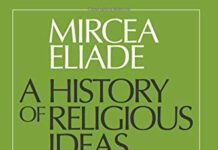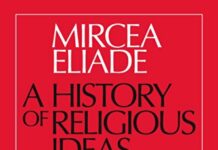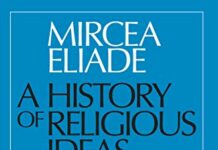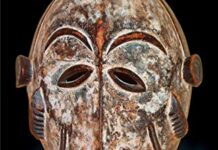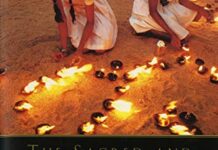
Ebook Info
- Published: 2012
- Number of pages: 175 pages
- Format: PDF
- File Size: 0.87 MB
- Authors: Mircea Eliade
Description
Organizing data from cultures the world over, Mircea Eliade, one ofthe preeminent interpreters of world religion in the twentieth century,lays out the basic patterns of initiation: group puberty rites, entranceinto secret cults, shamanic instruction, individual visions, and heroicrites of passage. The vast information assembled here transcendsusual scholarship. Eliade always affirms the greater experience in allinitiation – the indissoluble tie between humans and the cosmos ofgods, spirits, animals, ancestors, and nature.As Michael Meade writes in his foreword, Eliade “fervently workedat keeping the doors of perception open to the world of sacred symbolsand creative ritual. Through his insistence that we are each thenecessary inheritors of a vast sacred heritage, he has acted as a spiritualelder and distant mentor to me and many students of myth andritual. Like an archeologist of symbols, he has unearthed, preserved,and found new meanings in the rites of our ancestors.”
User’s Reviews
Reviews from Amazon users which were colected at the time this book was published on the website:
⭐Practically anything, including this book, written by Mircea Eliade (1907-1986) is a phenomenal read! He is a MAJOR figure in the study of the history of religious ideas. Romanian historian of religion, fiction writer, philosopher, and professor. He was a leading interpreter of religious experience, his paradigms in religious studies persist to this day. His theory that ideal models of divinity form the basis of religion, splitting the human experience of reality into sacred and profane space and time, has proved influential.Fluent in speaking and writing Romanian, French, German, Italian, and English, with a reading knowledge of three others, Hebrew, Persian, and Sanskrit.Between 1925 and 1928, he attended the University of Bucharest’s Faculty of Philosophy and Letters in 1928, earning his diploma with a study on Early Modern Italian philosopher Tommaso Campanella. In 1927, Eliade studied in Italy, where studied philosophy, religion and logic. After receiving a four year scholarship to study at the University of Calcutta Eliade also made a large tour of Egypt and stayed at a Himalayan ashram for a short time. In Calcutta he studied Indian philosophy, Sanskrit, Pali and Bengali. During this time, he studied and met Mahatma Gandhi, and adopted Ghandist ideas. Eliade received his PhD in 1933, with a dissertation on Yoga practices. During the same period, Eliade began a correspondence with the Ceylonese-born philosopher Ananda Coomaraswamy. In 1936, he made trips to London, Oxford and Berlin.During WWII, Eliade supported Facist, far right ideas such as those put forth by Italian dictator Benito Mussolini and opposed democracy (as managing to crush all attempts at national renaissance.)I’m not sure I support him here, but that was certainly a different time and place.By 1945, Eliade lived and worked in France. In 1957, he joined the faculty of the University of Chicago, and is generally admitted to be, along with Joachim Wach, the founder of the “Chicago School” that basically defined the study of world religions for the second half of the 20th century. Upon Wach’s death, Eliade was appointed as his replacement in 1964,to the Sewell Avery Distinguished Service Professor of the History of Religions.In 1966, Mircea Eliade became a member of the American Academy of Arts and Sciences. He also worked as editor-in-chief of Macmillan Publishers’ Encyclopedia of Religion, and, in 1968, lectured in religious history at the University of California, Santa Barbara. It was also during that period that Mircea Eliade completed his voluminous and influential History of Religious Ideas, which grouped together the overviews of his main original interpretations of religious history. In his later years his writing was severely hampered by arthritis. The last academic honors bestowed upon him were the French Academy’s Bordin Prize, in 1977 and the title of Doctor Honoris Causa, granted by the University of Washington in 1985.Truly a remarkable man! If you have not read any of his books look at his page on Amazon and pick on, buy it and READ it!
⭐This well-researched and thoughtful volume is not only arguably the finest work about Percy and his writings, it’s one of the best literary criticism works I’ve ever encountered as it expertly and carefully addresses all of the key, classical texts and influences that Percy used to shape his beguiling novels. An absolute must-read for fans of Percy as well as anyone interested in the powerful, insightful influence of existentialism on contemporary fiction.
⭐Mircea Eliade (1907-1986) was one of the most important historians of religion. In this book, he presents the initiation rites of primitive civilizations. Life in primitive societies were structured by myths and rituals. Unfortunately, our modern civilization, especially the Western one, has lost these initiatory rites that separate the stages of life.Our youths, lacking rites to carry then into adulthood, rely on gang wars, drugs, and some other means to go against the rules of society. Defiance is their rite of initiation. Even wars serve as an initiation rite, but the wars of the XXI century create individuals non-adapted to society, as the excellent book by Karl Marlantes – What it is like to go to war? shows.Likewise, religious rites are worn down, and losing significance.We cannot copy the rites of the past. The clock does run backwards. But knowing these rites and symbols that helped past civilizations to structure life may inspire us to think of how to cope will the ills of the present time.I am Roberto Lima Netto, a writer of Jungian books
⭐and
⭐, and of fiction thrillers
⭐and
⭐The book was exactly as described! Thank you for the quick delivery!
⭐I highly enjoyed this book. I liked how the author blended the disciplines of theology, anthropology, philosophy, and psychology. What was especially striking to the me is how many similar correspondences could be found across various cultures regarding how people would be initiated and the various yet similar ways this was done.Finally, I loved how the author reminded us of some of the wonder we have lost as we in modern and postmodern society lose our grasp of the language of symbolism, and how much it enriched the lives of the ancients. I highly recommend this book to the deep thinker.
⭐In this work, Eliade explores the general approaches to initiation found among archaic cultures and how these have survived or not in historical traditions. While the work can in no way claim to be complete, it is a classic in its field, like so much of Eliade’s work.Eliade utilizes a comparative methodology in looking for universal or nearly universal patterns in comparative religion. Here he looks at archaic initiation ceremonies in the Americas, Australia, and Africa, and compares these with India, Christianity, and historical Greece. The general parallels in symbolism and patter that he shows are quite meaningful and can help people understand related topics.Highly recommended for anyone studying this topic.
⭐I was shocked by how much research must have went into this work. Don’t let the page count mislead you, as the book is beaming with details and elucidations. I highly recommend Rites and Symbols of Initiation.
⭐Ritual “death and rebirth” ceremonies in primitive cultures produces a vital, psychological shift which not only prepares the youth for tribal duty but also initiates him into the deeper realms of his own psyche. Such rites were, and remain, spiritual in their processes and results. The initiated youths are brought into contact with their subconscious, wrathful “shadow side” no less, where they must overcome its terror and volatility and integrate its vital power. The Western world never had these ritual structures and we are spiritually poorer for it. In our society, the shadow side of the psyche is not confronted or integrated. Preserving the knowledge and practices of tribes and rites that knew how to face and overcome the psyche’s shadow becomes all the more important, and Eliade does a very good job indeed. He does repeat himself and say the same thing twice in virtually every chapter, but that’s a trivial complaint. This sort of scholarship is like an endangered species. This book is to be treasured.
⭐Ex-Seeker
⭐Exceptionally researched, insightfully explained. A singular book that melds philosophy, mythology and anthropological practices into a tome of profound knowledge in an easily readable manner.
⭐Pour rédiger un article de recherche.This was an xmas present. Apparently it was very informative & interesting to read, so overall all a good present..
Keywords
Free Download Rites and Symbols of Initiation: The Mysteries of Birth and Rebirth 1st Edition in PDF format
Rites and Symbols of Initiation: The Mysteries of Birth and Rebirth 1st Edition PDF Free Download
Download Rites and Symbols of Initiation: The Mysteries of Birth and Rebirth 1st Edition 2012 PDF Free
Rites and Symbols of Initiation: The Mysteries of Birth and Rebirth 1st Edition 2012 PDF Free Download
Download Rites and Symbols of Initiation: The Mysteries of Birth and Rebirth 1st Edition PDF
Free Download Ebook Rites and Symbols of Initiation: The Mysteries of Birth and Rebirth 1st Edition

